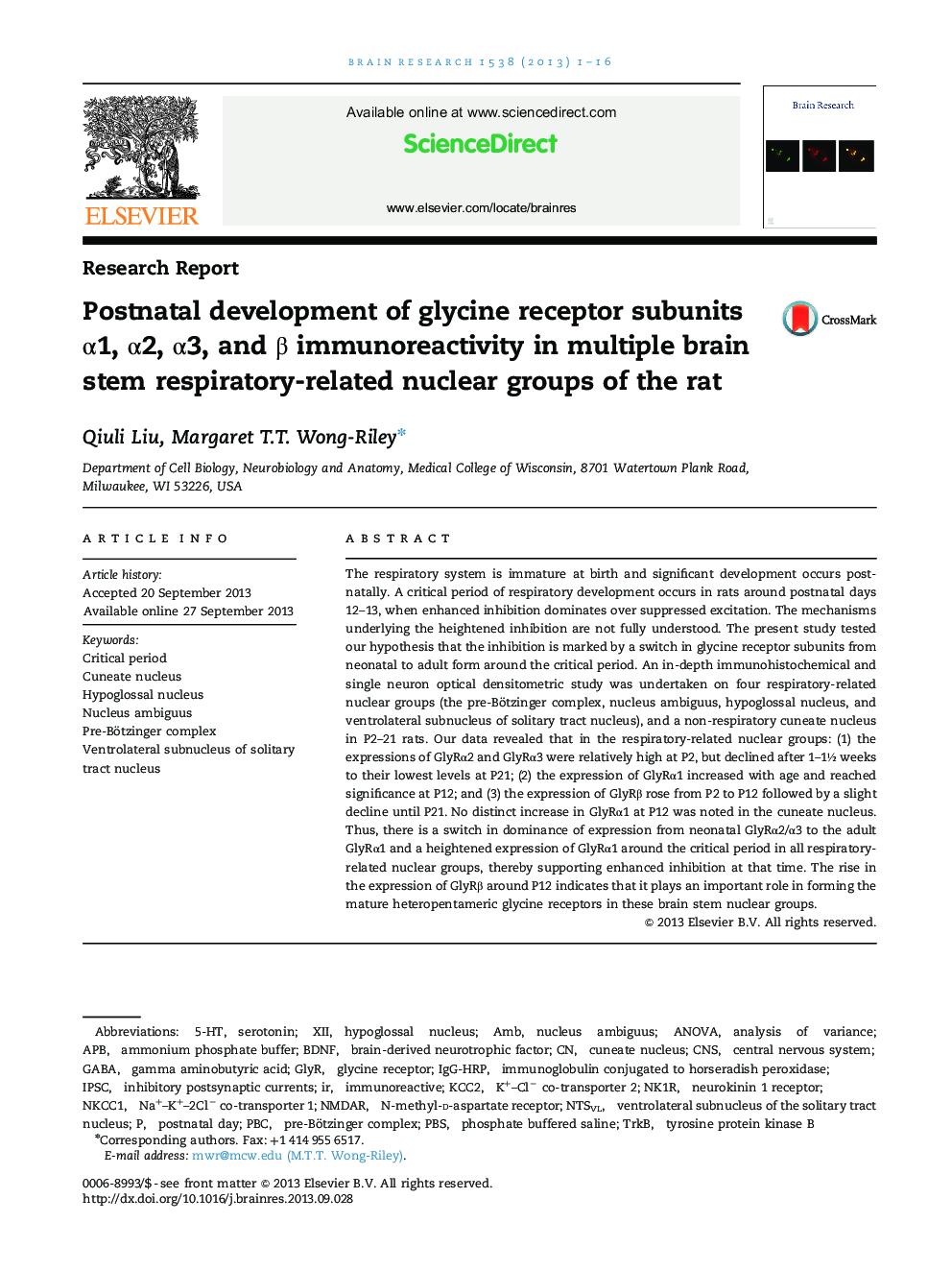| کد مقاله | کد نشریه | سال انتشار | مقاله انگلیسی | نسخه تمام متن |
|---|---|---|---|---|
| 6263675 | 1613901 | 2013 | 16 صفحه PDF | دانلود رایگان |

- Four glycine receptor subunits were studied in four respiratory-related nuclear groups.
- Glycine receptor α2 and α3 were relatively high at P2, but declined after 1-1½ weeks.
- Glycine receptor α1 significantly increased at postnatal day (P) 12.
- Glycine receptor β rose from P2 to P12, followed by a slight decline thereafter.
- A switch in dominance of glycine receptor subunits at P12 implies enhanced inhibition.
The respiratory system is immature at birth and significant development occurs postnatally. A critical period of respiratory development occurs in rats around postnatal days 12-13, when enhanced inhibition dominates over suppressed excitation. The mechanisms underlying the heightened inhibition are not fully understood. The present study tested our hypothesis that the inhibition is marked by a switch in glycine receptor subunits from neonatal to adult form around the critical period. An in-depth immunohistochemical and single neuron optical densitometric study was undertaken on four respiratory-related nuclear groups (the pre-Bötzinger complex, nucleus ambiguus, hypoglossal nucleus, and ventrolateral subnucleus of solitary tract nucleus), and a non-respiratory cuneate nucleus in P2-21 rats. Our data revealed that in the respiratory-related nuclear groups: (1) the expressions of GlyRα2 and GlyRα3 were relatively high at P2, but declined after 1-1½ weeks to their lowest levels at P21; (2) the expression of GlyRα1 increased with age and reached significance at P12; and (3) the expression of GlyRβ rose from P2 to P12 followed by a slight decline until P21. No distinct increase in GlyRα1 at P12 was noted in the cuneate nucleus. Thus, there is a switch in dominance of expression from neonatal GlyRα2/α3 to the adult GlyRα1 and a heightened expression of GlyRα1 around the critical period in all respiratory-related nuclear groups, thereby supporting enhanced inhibition at that time. The rise in the expression of GlyRβ around P12 indicates that it plays an important role in forming the mature heteropentameric glycine receptors in these brain stem nuclear groups.
Journal: Brain Research - Volume 1538, 13 November 2013, Pages 1-16